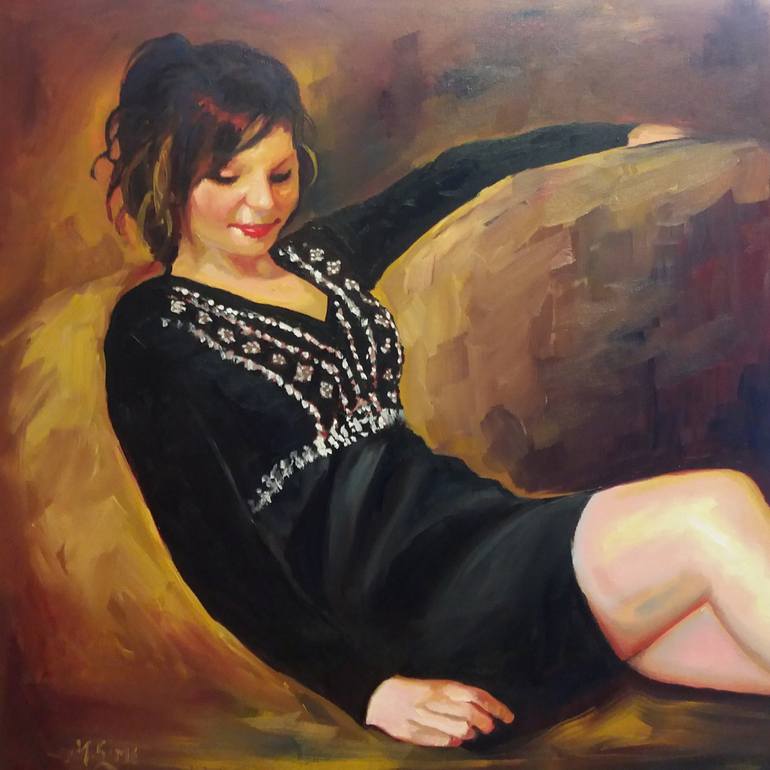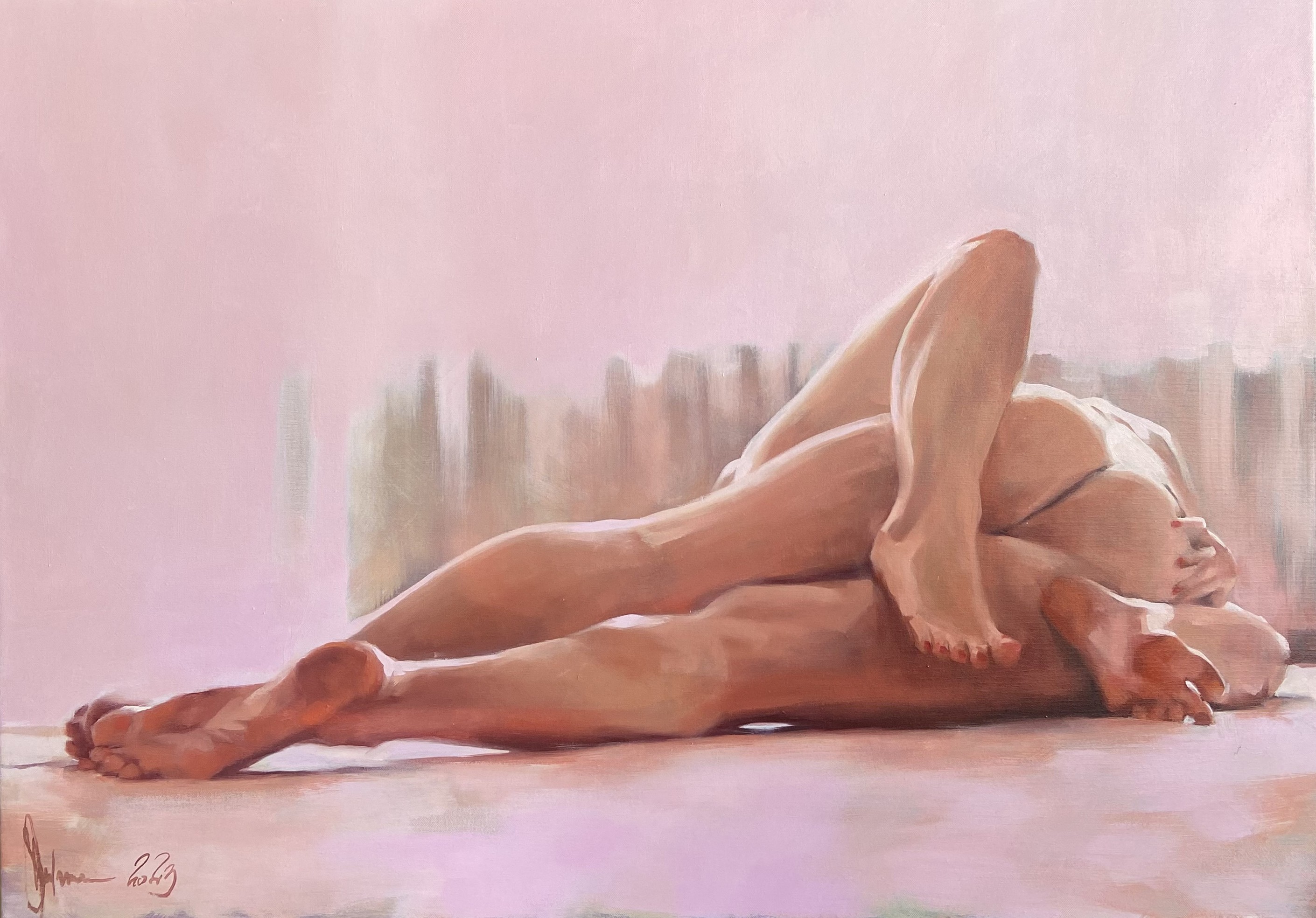A Trip Through the World of Metaphorical Oil Painting: Finding the Special Features and Emotional Deepness of the Tool

Background of Figurative Oil Painting
Emerging throughout the late Middle Ages and growing throughout the Renaissance, metaphorical oil paint has a rich history that mirrors both imaginative innovation and social advancement. Initially, oil paints were utilized in Europe as a way to enhance the luminance and deepness of shade in artworks. Musicians such as Jan van Eyck spearheaded the tool, showing its prospective to capture complex details and structures, therefore permitting an extra natural representation of the human form.
As the Renaissance advanced, popular figures like Leonardo da Vinci and Michelangelo broadened the boundaries of figurative oil paint. They stressed anatomical precision and perspective, producing jobs that communicated feeling and narrative deepness. The tool's flexibility enabled experimentation with light and darkness, leading to the advancement of chiaroscuro techniques that better enriched the visual experience.
Distinct Features of the Tool
The advancement of metaphorical oil paint has actually been considerably influenced by the unique attributes of the medium itself. Oil paint, made up of pigments suspended in oil, offers artists a remarkable flexibility that allows for a variety of surfaces and textures. Its slow drying out time enables thorough blending and layering, which can develop depth and luminance unattainable in other tools.
In addition, oil paint's rich pigmentation provides vibrant colors that preserve their intensity with time. This particular is crucial in figurative painting, where recording the nuances of complexion and psychological expressions is vital. The capability to attain refined slopes and soft changes improves the lifelike quality of subjects, enabling musicians to share complicated emotions.
In addition, oil paint sticks well to different surfaces, such as timber, steel, and canvas, expanding the scope of imaginative expression. The tool's flexibility sustains different strategies, from thorough realistic look to meaningful brushwork, allowing musicians to explore their private designs.
Inevitably, the distinct homes of oil paint not just improve the aesthetic experience yet additionally equip artists to interact profound narratives, making figurative oil painting a deeply expressive art kind.
Methods and Designs Employed
Within the realm of figurative oil paint, musicians utilize a varied selection of methods and designs that add to the deepness and richness of their work. One noticeable technique is polishing, where clear layers of paint are used over dried out layers, permitting light to reflect and penetrate, enhancing brightness and depth. This method is usually made use of to accomplish a sense of realistic look and intricacy in complexion.
Another technique is impasto, where thick layers of paint are applied with a scheme blade or brush, developing a textured surface area that adds a three-dimensional quality to the painting. This design can stimulate a visceral response, drawing the audience in through its responsive nature.
Artists likewise explore different brushwork styles, from fine, detailed strokes that capture elaborate features to more comprehensive, a lot more expressive strokes that share motion and feeling (figurative oil painting). The selection of shade scheme dramatically influences the overall state of mind of an item, with warm tones typically presenting feelings of convenience and trendy tones suggesting sorrowful
In addition, the combination of chiaroscuro, the comparison in between light and darkness, allows musicians to create dramatic results that improve the narrative top quality of their work. Each strategy and style is meticulously picked to boost the audience's experience and understanding.
Psychological Depth in Figurative Art
Psychological depth functions as a foundation in figurative art, permitting artists to transcend simple representation and involve audiences on a profound level. This psychological resonance is typically attained through the nuanced portrayal of human numbers, expressions, and interactions. Artists harness the power of shade, light, and shadow to evoke sensations that resonate deeply with the audience, producing a natural connection to the subject matter.
In figurative oil painting, the detailed layering of paint can mirror the intricacies of human feeling. The selection of combination, whether awesome or warm, plays a critical role in establishing the state of mind and environment of a piece. As an example, softer tones read might evoke peace and introspection, while vibrant, contrasting colors can communicate stress and drama.

Influential Artists and Their Works
Many prominent artists have substantially shaped the landscape of metaphorical oil painting, each contributing special viewpoints and methods that remain to influence modern makers. Amongst these musicians, Lucian Freud sticks out for his extreme mental deepness and raw representation of the human form, commonly obscuring the lines between charm and decay. Freud's works, from this source defined by thick, impasto brushstrokes, invite customers to confront the complexities of identification and susceptability.

Likewise, Andrew Wyeth's meticulous realism in items like "Christina's Globe" records profound narratives within relatively simple compositions. His usage of light and darkness stimulates a sense of fond memories and psychological resonance, attracting audiences into the intimate globes he depicts.
In the realm of modern-day art, Kehinde Wiley has her explanation actually acquired recognition for his dynamic, larger-than-life portraits that challenge standard ideas of depiction. By putting people of shade in contexts similar to classic portrait, Wiley's work redefines the canon of art background.
These musicians, together with others, have not only enriched figurative oil painting however have likewise broadened the discussion bordering society, emotion, and identity, ensuring that the medium continues to be an essential kind of expression in the art world. figurative oil painting.
Final Thought
In conclusion, figurative oil paint remains a powerful medium that encapsulates the complexities of human feeling via its abundant pigmentation and flexible strategies. The journey via figurative oil paint exposes its long-term significance in the art world.
The exploration of figurative oil painting uses an extensive insight into the interaction of strategy, emotion, and historical context that defines this age-old medium. Oil paint, composed of pigments put on hold in oil, uses artists an amazing convenience that permits for a wide variety of appearances and surfaces.Within the realm of figurative oil painting, musicians utilize a diverse selection of techniques and designs that add to the depth and richness of their job.Countless significant musicians have considerably formed the landscape of metaphorical oil painting, each contributing unique viewpoints and methods that proceed to motivate contemporary designers.In final thought, metaphorical oil paint continues to be an effective tool that encapsulates the complexities of human emotion via its abundant coloring and versatile techniques.